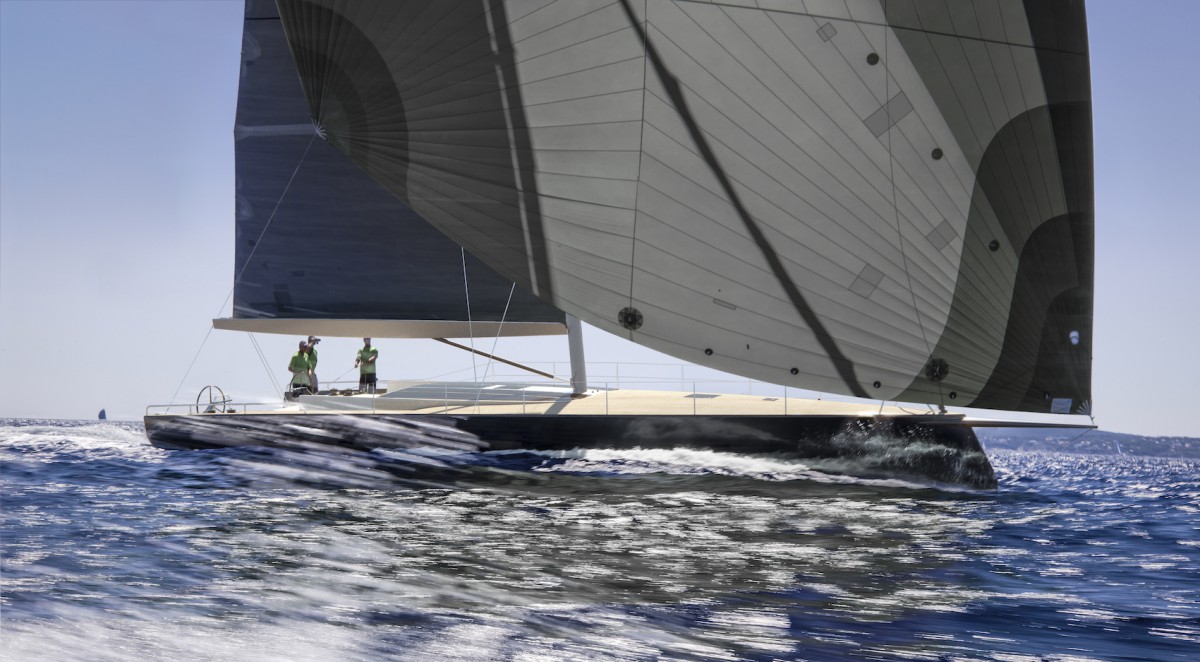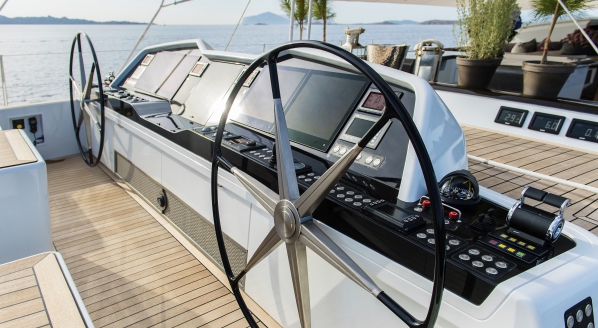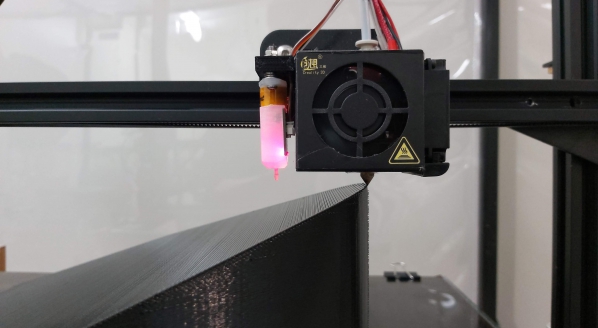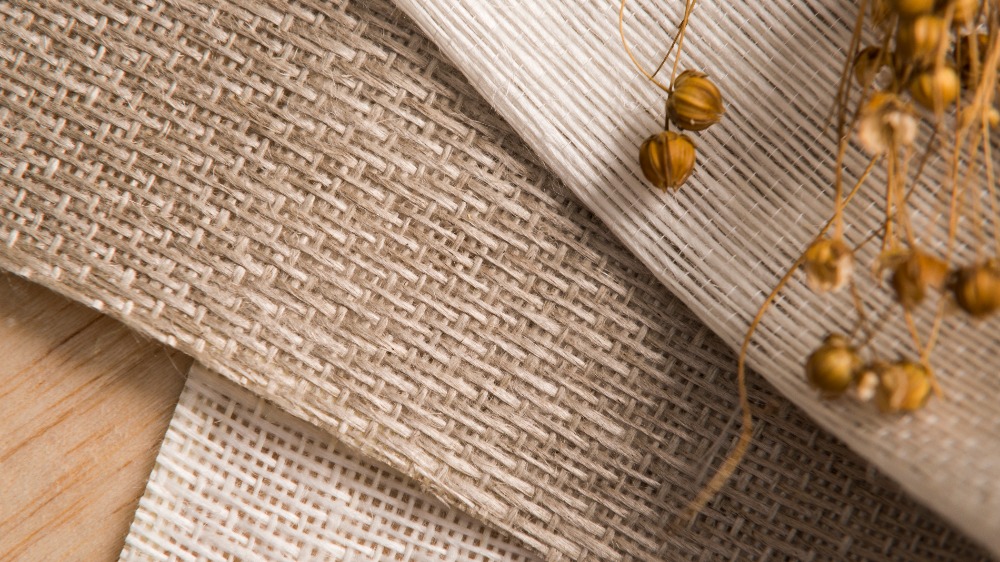Flax: a sustainable alternative to carbon
Baltic Yachts has recognised the benefits of using flax as an alternative to carbon fibre in yacht construction…
With a growing focus on sustainability, Baltic Yachts has undertaken advanced research and development into the benefits of using flax as an alternative to carbon fibre in yacht construction. As a naturally-grown raw material, requiring little or no herbicides or fertilisers and widely available in Europe, flax can be used as a greener solution for reinforcement in laminate construction. While there are other natural fibres available, to Baltic’s knowledge flax is strongest and most easily available.
Baltic Yachts is typically known for its expertise in advanced composite construction, as well as ongoing innovation, hence the builder is pioneering research into the application of natural fibres within yacht construction. “Baltic is well known for high-end composites, but we have always been aware that we have a responsibility to the environment,” says Henry Hawkins, executive vice president at Baltic Yachts. “Natural progression, willingness and the culture of innovation at the company has led us to flax, which now sits alongside a suite of many other ongoing sustainable developments.”
Pekka Laurila has been heading up the research into flax at Baltic Yachts, exploring ways of optimising its properties and introducing the material into production. As a result of this research project, Baltic has used flax for interior applications – including for the construction of the ceiling panels and floorboards on board Baltic 130 My Song – due to the fibre’s wood-like appearance. Baltic is now applying flax in a structural capacity for the first time on the Baltic 68 Café Racer, with an eye on the potential to use it structurally on superyacht projects also.
 Baltic 68 Café Racer
Baltic 68 Café Racer
“When it comes to mechanical properties, you can’t compare flax and carbon,” explains Laurila. “Carbon is stronger and will always be stronger unless they find a way to modify flax. Therefore, on the Baltic 68, we have used carbon fibre in all the high-load and high-stress areas but, in the areas where we need to build up thickness in the laminate, we have used flax fibre because the density of flax is lower than carbon. It is a question of using the right material in the right place: looking at the boat as a whole and identifying areas where we do need the properties of carbon, and where we don’t we can use flax and minimise the overall environmental impact of the yacht.”
While the key advantage of using flax within yacht construction is sustainability, another benefit that Baltic Yachts is investigating is the material’s ability to more effectively absorb vibrations. “In a normal sandwich construction, where you have a core material and thin skins, the impact on vibration absorption is not that much, but if we use monolithic flax, the impact is greater,” Laurila adds. “We are continuing to test this property of flax to see if it can also be used to build even more comfortable yachts.”
Having established both the possibilities and limitations of flax, the next step for Baltic Yachts is to explore more environmentally-friendly alternatives for resin – the matrix that holds composite fibres together. “We use epoxy as the matrix and normal epoxy is good for structural integrity but it is not particularly environmentally friendly, so as an alternative we are investigating the use of bio-based epoxies, of which there is much development,” advises Laurila.
While flax is already used in regular applications within other marine sectors, such as on paddle boards and smaller boats, Baltic Yachts is pioneering the use of the material in large yacht construction, due to the company’s dedication to innovation, sustainable development and openness to taking risks. Once delivered, the Baltic 68 Café Racer will present an opportunity for Baltic to showcase the potential of flax within the superyacht industry and set a leading example in its capability to build yachts in a more sustainable way.
Profile links
NEW: Sign up for SuperyachtNewsweek!
Get the latest weekly news, in-depth reports, intelligence, and strategic insights, delivered directly from The Superyacht Group's editors and market analysts.
Stay at the forefront of the superyacht industry with SuperyachtNewsweek
Click here to become part of The Superyacht Group community, and join us in our mission to make this industry accessible to all, and prosperous for the long-term. We are offering access to the superyacht industry’s most comprehensive and longstanding archive of business-critical information, as well as a comprehensive, real-time superyacht fleet database, for just £10 per month, because we are One Industry with One Mission. Sign up here.
Related news

Baltic Yachts: bringing the true feeling of sailing to superyachts
Baltic Yachts discusses the development of its innovative force feedback system, which puts feeling back into the helm
Technology

3D printing in superyacht construction
Yachting Developments' in-house 3D printing capabilities are being applied to superyacht refit and build projects
Technology

Could sustainable composites become a reality?
With insights from Azimut-Benetti and the National Composites Centre
Technology
Related news
3D printing in superyacht construction
6 years ago
Could sustainable composites become a reality?
6 years ago
NEW: Sign up for
SuperyachtNewsweek!
Get the latest weekly news, in-depth reports, intelligence, and strategic insights, delivered directly from The Superyacht Group's editors and market analysts.
Stay at the forefront of the superyacht industry with SuperyachtNewsweek




